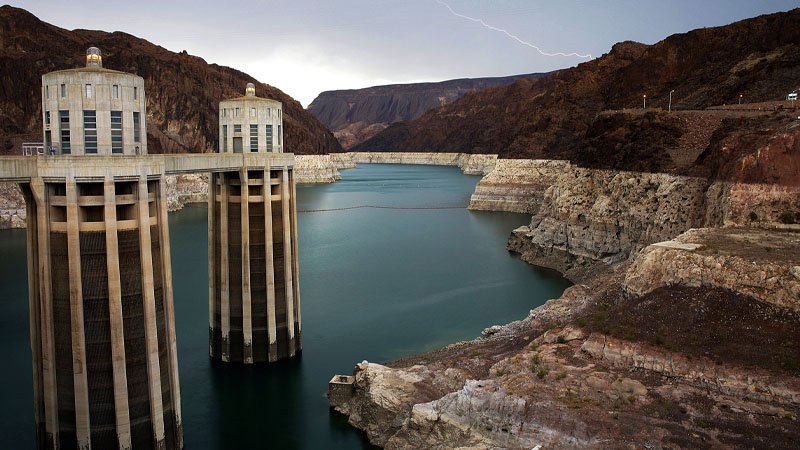
News of historically low (and falling) levels in the Colorado River basin has sent shock waves felt throughout the Southwest.
On Aug. 16, the U.S. Bureau of Reclamation announced a Level 1 water shortage for Lake Mead - for the first time ever, prompting mandatory cuts throughout the Southwest beginning in January 2022.
In a recently released study, the Bureau said that Lake Mead, the country's largest reservoir by volume, is expected to be at 34 percent capacity by year's end. The Bureau also projects Lake Mead's elevation to remain at about 1,065.85 feet above sea level in 2022, which is 9 feet below the lower basin shortage determination trigger and 24 feet below the drought contingency trigger of 1,090 feet.
The river is a main source of water for users in Arizona, Nevada, Southern California and Mexico.
Under the cuts, Arizona will see an 18 percent reduction of its total Colorado River Supply and Nevada will lose about 7 percent. The government will also reduce Mexico's annual allotment of water from the river by 5 percent. A second round of cuts could go into effect as early as 2023 if Lake Mead levels continue to fall and drop below 1,050 feet above sea level.
The U.S. Bureau of Reclamation announced a Level 1 water shortage for Lake Mead - for the first time ever, prompting mandatory cuts throughout the Southwest beginning in January 2022.
"The Colorado River is sending us a clear message: conserve, reuse and recycle. The river has been a lifeline for Southern California for more than 80 years," said Adel Hagekhalil, general manager of the Metropolitan Water District of Southern California.
"While California will not be required to contribute supplies to Lake Mead next year under the Drought Contingency Plan, this is a wake-up call that we need to strengthen our response to continued drought conditions."
The news reverberated throughout Southern California, where the Metropolitan Water District of Southern California serves 19 million people in parts of Los Angeles, Orange, San Diego, Riverside, San Bernardino and Ventura counties.
In response to the extreme drought conditions, the Metropolitan Water District of Southern California Board of Directors declared a Water Supply Alert, calling for consumers and businesses to voluntarily reduce water use and help preserve the region's storage reserves.
The board's action urges residents, businesses and agencies in the District's 5,200-square-mile service area to lower the region's water demand to stave off more severe actions in the future, which could include restricting water supplies to Metropolitan's 26 member agencies. The declaration comes a day after the Bureau of Reclamation declared a first-ever shortage on the Colorado River, which typically provides about 25 percent of Southern California's water needs.
In response to the MWD's announcement, the Los Angeles Department of Water and Power also called for increased conservation.
Use restrictions in Colorado River Water do not affect California, but the Metropolitan Water District of Southern California and the Los Angeles Department of Water and Power are calling for cutbacks among their users.
"In the City of Los Angeles, we haven't taken our foot off the conservation pedal. We've kept in place our aggressive watering restrictions, and continued to fund a slew of water-saving measures and programs that help our customers conserve water – even during wetter years," Martin L. Adams, LADWP general manager and chief engineer, said in a news release. "Now, with extremely dry conditions, we're urging all of our customers to redouble their efforts. We're here to support them in saving even more water."
Pending legislation in Washington would provide funding for several water projects throughout the American West.
Included in the $1 trillion infrastructure bill recently approved by the U.S. Senate to help rebuild roads and bridges is $8.3 billion for a variety of water projects.
The plan would provide $1.15 billion for improving water storage and transport infrastructure such as dams and canals, $1 billion for projects that recycle wastewater for household and industrial use, $300 million for drought measures (conservation and storage projects), $250 billion for studies and projects to make sea water and brackish water usable, $800 million to repair dams, $1 billion to repair water-treatment facilities and infrastructure in rural areas.
The bill is awaiting action in the House.

